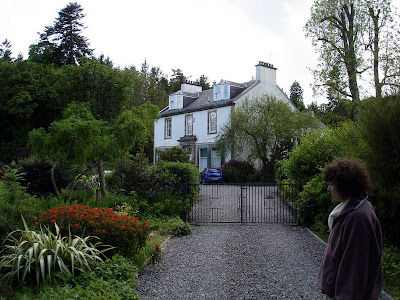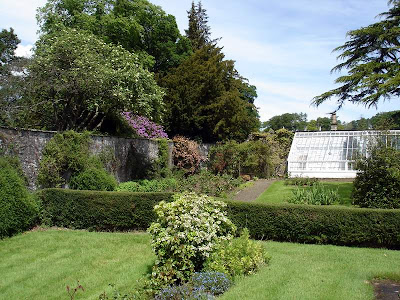While Georgiana and John were staying in London and waiting for The Warrior to be ready for the voyage to the Swan River colony, they stayed in a street that is now part of the busiest shopping area in London, just off Oxford Street. I had been there many times as a student in the 1970s and more recently so I already knew that the house where they stayed was now no more than the side of a huge department store.
However, Georgiana does mention in her journal that she went one day to ‘St Paul’s churchyard’ to buy shoes and fabrics. Mike and I set off on a sunny morning to retrace her footsteps and to find out what might still exist that she had passed by that day in 1829.

St Paul’s is one of the oldest buildings in London and although the area around it has changed, the churchyard itself is still the same as it was in the 19th Century when she was there. City workers still seek the shade there to eat their lunch during the summer and tourists still sit there to soak up the peace and quiet amid the bustle of that frenetic city.

I had found (by searching on the Internet) an engraving of the firm that she mentions, Hitchcock and Rogers. They were a ‘linen drapers, silk mercers, haberdashers and hosiers’ so they would’ve been the ideal hunting ground for her at a time when she needed to stock up with everything required not only for the voyage but for years to come after that.
With ‘St Paul’s churchyard’ as their address, their advertising simply tells customers to find them ‘opposite the tree’. In the engraving, the tree can be seen clearly and since the position of the great cathedral has not changed, it was not hard for us to work out just where Georgiana went shopping. We found exactly where the tree and the shop were. The tree (now much larger of course) still stands there.
Here I am standing beneath The Tree and wondering if Georgiana ever stood there too, for shade, wearied from the excitement of her mammoth shopping task.
We discovered that a street called “Shoe Lane’ is right beside St Pauls and , like other streets named in the same way, would almost certainly have been the place to buy shoes at that time.
Unsurprisingly, we also discovered that the spot where Hitchcock and Rogers once stood has been built on and is now part of a beautifully designed modern complex with wide open spaces that invite the public to sit and gaze on the ancient churchyard.
In the 19th Century, the area was an open space surrounded by intensive shopping opportunities (shoes, shoes, shoes!) and although the narrow streets and exciting shops have been replaced by smooth, tall, white office buildings, the open view of the ever-fascinating facade of St Paul’s has been retained.
I sat quietly there on a bench and looked at the map. My view was almost the same as hers but there were no longer any shoes to be had. A good thing, as I most certainly would have bought some too!
One of the few remaining features apart from St Paul’s itself, is the old pump. I doubt that G would have needed water badly enough to drink from what was more often used for watering horses but it was heartening to know that there was something else around that, without any doubt, she would have walked past on her way to the boot-makers.
This was to be the last time that we went looking for Georgiana in England or Scotland before we made the long, long journey across oceans to the other side of the world – just as she had. Soon we would arrive home again in the far south west of WA. But ahead of us was a 24 hour trip in a comfortable aeroplane, rather than a six-month voyage of great hardship and considerable nutritional deprivation.
BB





















































